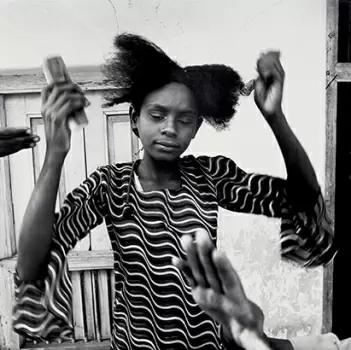"The forefathers of these Siddis were brought to India mostly as slaves”
27-September-2013
Vol 4 | Issue 39
Rizwana combs her fizzy hair to set it into a plait and is soon ready to attend a wedding. Her flat nose, shapely eyebrows, pouted lips and dark skin are distinct African characteristics - but she's an Indian.
Welcome to the world of Siddis - Indians of East African descent whose life and times - not known to most Indians - have been portrayed in a photographic exhibition here.
 |
|
There are an estimated 70,000 Siddis living in various parts of India (Photo: IANS)
|
"The forefathers of these Siddis were brought to India mostly as slaves, first by the Arabs and then by the Portuguese," says Manish Karmwar, assistant professor at Delhi University's Department of African Studies.
"They started settling here along the western coastline of India. There are traces of their role in socio-political and military life during the period of the (13th century) Delhi Sultanate, the Nizamshahi era and Mughal India," he adds.
Today there are an estimated 70,000 Siddis living in parts of Gujarat and Maharashtra and the hinterland of Andhra Pradesh and Karnataka.
Providing a fascinating peek into their isolated lives and cultural inheritance is Mumbai-based photographer Ketaki Sheth.
Through her exhibition, "A Certain Grace - The Sidi: Indians of African Descent", at the National Gallery of Modern Art till November 3, Sheth has been able to open their "invisible" life to the masses.
Through a collection of 65 black-and-white photographs, she has captured the weddings, everyday life and many lighter moments of this ethnic group.
"For me it was an accidental discovery, there are many who don't know about them. But it is great to see how beautifully they have embraced the local language, drinks, food and religion, including Sufism, Hinduism and Christianity, without giving up their African traditions," says Sheth.
Karmwar, whose research on the Siddi community is amongst one of the first, said most people of the community are Muslims though there are a few who have adapted to Christianity in Kerala and there are a few Hindus in Jamnagar in Gujarat.
"These people created two major empires in India: Sachin in Gujarat and Janjira in Maharashtra," he pointed out.
"These Afro-Indian dynasties are a reminder of the influence that Afro-Indians wielded in parts of India. While this glory was not to remain forever, the cultural contributions made by Africans are still alive, particularly in music and dance," Karmwar added.
The first historical record of a Siddi is of Jamal-ud-Din Yaqut, a close confidant of sultan of Delhi Razia Sultana (1205-40) and a prominent Siddi slave-turned-nobleman from the Delhi Sultanate that preceded the rise of the Mughals in India.
"They completely consider India as their home," Sheth said.
Bearing this out is a picture of women wearing bangles and salwaar-kameez, a young bride in a lehenga and a man performing a tribal dance, among many more such.
The relationship between the artist and the subject is marked by long correspondence - remarkably reflected in these pictures.
One of the pictures that points to the "relationship of trust" is that of Ramzamma. She is laughing her heart out while sitting on a mud floor. The caption reads: "Ramzamma laughs when asked if she is pregnant with her first child. It is actually her fourth. Jambur, 2005."
"It was a fruitful journey of knowing them and their lifestyle," Sheth said. - IANS














